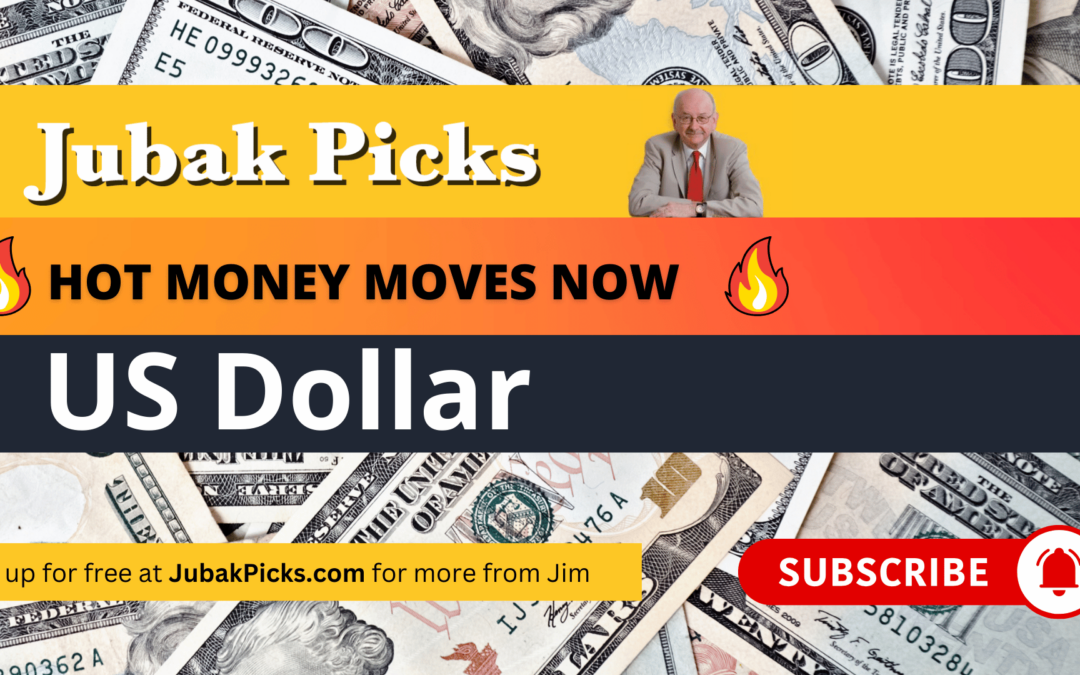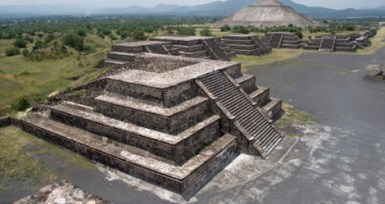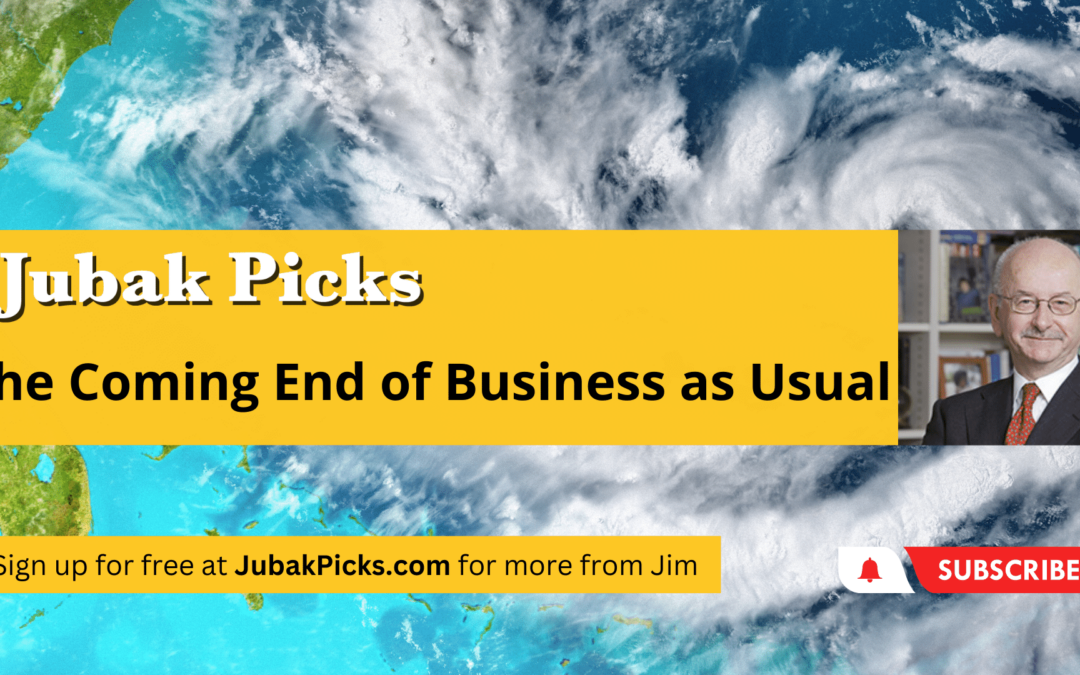 April 19, 2025
April 19, 2025
What You Need to Know Today:
Walmart cuts its forecast for 2025 after strong end to 2024
Walmart (WMT) forecast lower than expected profit for 2025. The company said it’s anticipating adjusted earnings of $2.50 to $2.60 per share, below the average projection of $2.74 a share by Wall Street analysts. As of noon New York time today Walmart shares were down 6.8% as the lower guidance outweighed strong results for the just concluded quarter. Both top and bottom lines came in higher than Wall Street expected in the retailer’s quarter and fiscal 2025. Quarterly revenue increased 5.3% year over year to $183 billion, while adjusted earnings per share were up 10% to 66 cents a share.

Fed signals fewer cuts, higher interest rates, higher inflation in 2025
In today’s quarterly update to its projections on economic growth, inflation, and interested rates in its Dot Plot survey of sentiment, Fed officials and governors forecast fewer rate cuts for next year than in their September projections, and they saw the fight against inflation making considerably less progress in 2025. According to the median estimate, they now see the benchmark interest rate reaching a range of 3.75% to 4% by the end of 2025. That would mean just two 25 basis-point cuts. The Fed’s projections are considerably more pessimistic than investors or Wall Street economists are. A majority of economists surveyed by Bloomberg had expected the median estimate would point to three cuts next year.

As expected, the Federal Reserve cuts interest rates by another 25 basis points
Today, December 18, the Federal Reserve lowered its benchmark interest rate for a third consecutive time.The Open Market Committee voted 11-1 to cut the federal funds rate to a range of 4.25%-4.5%. Cleveland Fed President Beth Hammack voted against the action, preferring to hold rates steady.

Please watch my new YouTube video: Hot Money Moves NOW! The dollar
Today’s Hot Money Moves NOW is U.S. Dollar. The dollar has been on a good run and is up 7% in the last three months, 2% in the last month. I expect this to continue with higher tariffs, and a Fed that will remain steady while other currencies are seeing more volatility. To get in on this you can buy an ETF like Invesco DB US Dollar Index (UUP), currently up 10.19% YTD with a 75 basis point expense ratio. Another option would be the WisdomTree Bloomberg U.S. Dollar Bullish Fund (USDU), up about 11% YTD with a 50 basis point expense ratio. WisdomTree buys Treasuries while Invesco uses futures but both are similarly sized ETFs and good ways to play the US dollar.

Trade war with Canada could be really nasty
Canada is looking at imposing taxes on major commodities it exports to the United States-—including uranium, oil and potash—if the incoming Trump Administration carries out a threat to impose 25% tariffs on Canadian exports.

So much for that easy fix to China’s consumer economy
China’s retail sales growth unexpectedly weakened in November. Retail sales rose 3% from a year ago. That was the the slowest annual growth rate in three months and it was well below even the most bearish forecast.
Just last week Chinese policymakers elevated boosting consumption to the top priority for next year. That marked , only the second time in a decade that the consumer economy was the focus of official policy.

Special Report: 10 Great Growth Stocks that Are Getting Greater–today my 6th pick Danaher
GREATER Growth Stock Pick #6: Danaher (DHR). Danaher is a smart (that’s key) serial acquirer–and asset divester–in the life sciences space. And that makes this stock very interesting in an environment where small, young life sciences companies might be looking for help/rescue/acquisition because they can’t raise capital in a tough part of the credit cycle. I like Danaher now, as well, because the stock looks to have just about completed its re-rating after a spike in sales during the Covid pandemic led to over enthusiasm about the stock.
Live Market Report (20 minute delay)

Please Watch My New YouTube Video: The Fed’s Dollar Currency Ripples
Today’s video is The Fed’s Dollar Currency Ripples. Monday, August 14 was a big day in the currency market with the currencies of China, Argentina, and Russia all making headlines. China’s yuan fell to its lowest level against the dollar since November. The Argentine peso collapsed as the government looks like it is losing its fight against inflation. The Argentine government raised rates by 21 percentage points to 118% and devalued the peso by another 18%. This immediate cause of the drop in the Peso was a surprise victory by a libertarian in a recent primary race for president. Argentine debt due in 2046 fell $0.04 to $0.28 on the dollar. Russia had an emergency rate increase of 350 basis points to a benchmark interest rate of 12%. Of course, none of these things are solely attributable to the dollar’s strength. China’s economy is slowing, Argentina is dealing with economic chaos, and Russia is feeling the effects of international sanctions due to the war in Ukraine. But, the dollar is very strong because it’s safe. The U.S. economy is showing surprising signs of growth with inflation going down and interest rates expected to remain high for some time. The popularity of the dollar in currency markets is creating big economic ripples. China, Argentina, and Russia are the tip of a very large iceberg. The World Bank and IMF say that 40% of the world’s poorest countries are on the verge of default. It’s time to watch your dollars, yuan, pesos, and developing country currencies closely.

Please Watch My New YouTube Video: Quick Pick Alphabet
Today’s Quick Pick is: Alphabet Inc (NASDAQ: GOOGL) or as most people know it, Google. Google is an extraordinarily good stock with pricing power. At 85% of the search market, Google is pretty close to having a monopoly. The good time to buy a stock like this is when there have been doubts about it. The recent worries were Microsoft’s addition of AI to their search engine, possibly having a huge impact on Google and a decrease in Google’s advertising market. These factors caused the stock to plateau for a time, but we’re now seeing the stock shoot upward. This has been solidified by second quarter earnings. Revenue growth returned to YouTube, searches increased, and second quarter revenue was up 7% year to year, cloud revenue grew 28% and operating margins grew to 29% from 28%. Morningstar says Google is about 17% undervalued. Google is a part of my long term 50 stocks portfolio, but I’ll be adding it to my 12-18 month JubakPicks portfolio as well.

Saturday Night Quarterback (on a Sunday) says, For the week ahead expect…
The key sentiment barometer I’m watching is Palo Alto Networks (PANW), down 13% in the last month on fears that Microsoft (MSFT) is going to gobble up the revenue growth in the cybersecurity space. I think that fear is overblown, at least when it comes to Palo Alto Networks. The stock has long been a favorite of growth stock investors and, if sentiment on market direction for the rest of 2023 is positive I’d expect strong buying in the shares ahead of the Friday, August 18, earnings report. The Wall Street consensus calls for the company to report earnings of 54 cents a share against 15 cents a share in the fiscal quarter a year ago.

Watch the credit crisis at work: Moody’s cuts ratings on 10 regional banks
On Monday Moody’s Investors Service Ratings cut the credit ratings of 10 small and midsized banks. The company also put six big lenders on notice for a future downgrade assigning them a negative outlook.

Credit card balances hit record $1.03 trillion–and remember student loan payments resume in October
Credit card balances hit $1.03 trillion in the second quarter, up 4.6% from $986 billion in the preceding quarter, according to the Federal Reserve Bank of New York.
CPI inflation ticks up but stays tame–Markets convinced Fed will stand pat in September (But then what?)
CPI headline, all-items inflation rose at a 3.2% annual rate in July. That was up from the 3% annual rate in June and the first increase after 12 months of steady declines. But the uptick seems mostly an artifact of higher housing costs, an item that shows a longer-term downward trend in prices. The market read this morning is, therefore, that this is continued good news on inflation and that it cements the likelihood that the Fed will stand pat on interest rates at its September 20 meeting. The CME FedWatch tool put the odds of no increase from the Fed on September 20 at 90.5% today. That’s up from odds of 86% yesterday, August 9. But if the question of what the Fed will do in September is settled (in the market’s mind at least), the issue of what the Fed will do (or say) about the future direction of interest rates remains uncertain.

Please Watch My New YouTube Video: Quick Pick Visa
Today’s Quick Pick is Visa (NYSE: V). Shares of Visa are showing a good trend reversal. From June through July, Visa’s stock began to pick up after sitting flat for some time. The reason for this jump? The company’s second-quarter report included a 13% increase in net revenue, a 9% increase in payment volume, and an increase in margins to 67.5% from 66.9% in the previous quarter. Visa is so embedded in the economy that it can actually outperform the economy. For example, Visa recently went to war with small merchants by lowering the permissible surcharge on credit card payments from 4% to 3% and the company has deployed inspectors to ensure merchants are abiding by that rule. That’s even though back in 2017, the Supreme Court decided that laws that regulate surcharge amounts were unconstitutional. Visa isn’t making a law, but they clearly have the market clout to put this kind of pressure on small businesses. The 20% of merchants that have imposed a surcharge on credit card use don’t seem to be affecting profit margins or growth for Visa. Morningstar calculates that Visa is trading at a 17% discount to fair value, although the trailing twelve-month PE is 30.2. Visa always trades at higher than a market multiple. The 5-year average PE is 35.6, so 30.2 actually looks like a discount. I own it in my 12-18 month Jubak Picks portfolio and will continue to hold it there. I am also adding it to my long-term 50 Stocks Portfolio.

Please Watch My New YouTube Video: Is Bank Lending Finally Starting to Get Tighter?
Today’s video Is Bank Lending Finally Starting To Get Tighter? The Federal Reserve regularly does an opinion survey of bank lending officers to ask if they’re seeing a tightening of credit standards on loans at their banks. In the most recent survey, 50.8% of banks reported tightening lending terms for medium and large business loans in the second quarter-up from 46% in the first quarter. They’re also reporting a rise in demand for loans. In the second quarter, 51.6% reported weaker demand, down from 55% in the previous quarter. We’re seeing the Fed’s policies slowly start to work. Eventually, this tightening will also hit the consumer level, making it more difficult to get a personal loan or a new credit card. This trend is something to watch as banks tighten their lending while demand remains steady.

Please Watch My New YouTube Video: Trend of the Week Are We Looking at a Supply Crisis for Treasuries?
Today’s Trend of the Week is Are We Looking at a Supply Crisis for Treasuries? The federal deficit grew by $1.39 trillion in the first nine months of fiscal year 2023. That’s a huge addition to the deficit, an increase of 170% compared to the first nine months of 2022. The Treasury also recently increased its forecast for borrowing in the July-September quarter to another $1 trillion. This fast increase in the supply of Treasuries has been tough on the market. The Fed is trying to shrink its balance sheet and not buy as many new Treasuries. Private sector investors at auction are demanding a bigger discount. And because of the debt ceiling shutdown in new debt and the drawdown on the Treasury’s cash balances, the treasury has been issuing a lot of short-term bills to rebuild its buffer. Right now, however, Treasury is trying to move away from the short bills and looking to selling longer maturities. The market has little appetite for longer maturities as inflation seems to have staying power. Recent auctions on 7-20 year treasuries have been pretty weak. If you’re looking to buy 10-year Treasuries, look for an extra yield premium around 5% or so before the market is down dealling with as with this supply issue.

Here’s my preview: CPI inflation report for July due Thursday a.m.
There’s a good chance that the Thursday morning CPI inflation report for July will show a small step backwards in the Fed’s battle against inflation. Here’s the Wall Street consensus as of the end of last week according to FactSet.

Saturday Night Quarterback (on a Sunday) says, For the Week Ahead Expect…
Wall Street is starting to look past this quarter’s earnings recession and lick its chops at a return earnings growth in the third quarter. Earnings for the second quarter are turning out to be just as depressing as everyone anticipated. With 80% of the companies in the Standard & Poor’s 500 already reporting, earnings per share for the companies in the index are down more than 7% from the second quarter of 2022. this quarter will mark a third straight quarter of earnings declines. But, increasingly, Wall Street analysts are forecasting a return to earnings growth (if you exclude earnings from energy companies) in the third quarter.

Gone to the Beach!!
I’m headed to the big sand of Fire Island for a few days. Back in the saddle on Saturday.

Please Watch My New YouTube Video: What About That 2.4% GDP Growth Rate Surprise?
Today’s video is What About That 2.4% GDP Growth Rate Surprise? Economists were expecting a 1.5% annual growth in the second quarter, but the first read reported a 2.4% growth rate–up from 2% in the first quarter. Where did the growth come from? Is the economy inexplicably stronger than anyone expected? Why haven’t the Fed rate increases dampened growth? How is inflation coming down as growth continues? There are suggested answers to these questions within the GDP report itself. The main explanation is that this trend, like all economic trends, is affected by lags. You can also see a shift in where the growth is coming from. GDP growth has recently a result of increases in consumption, while growth from business investments has been more subdued. Consumer spending was up in the most recent quarter, but it was only up 1.6%, not as high as the overall 2.4% growth rate. Where did the rest of the growth come from? Investments. Business investments came in at a 4.6% annual increase. Momentum built up by the Inflation Reduction Act, the subsidies and actual funding for business investment is still kicking in and we’re seeing an investment boom at the moment. Consumer spending going up 1.5% is positive, but what’s the trend on consumer spending? My guess is somewhere in the third or fourth quarter, we’ll see business investment peak and we’ll go back to a familiar growth pattern that focuses on consumer spending, where the Fed’s interest rates are more important.

Fitch cuts U.S. credit rating
The big problem, in my opinion, is that the today’s action by Fitch Rating won’t be the last ding to the U.S credit rating. It’s hard of me to see a quick turnaround in any of the negative trends that Fitch cited as a reason for lowering its rating on U.S. debt to AA+ from AAA.

Please Watch My New YouTube Video: Corporate Profit Margins–The Other Inflation Problem
Today’s Trend of the Week: Corporate Profit Margins–The Other Inflation Problem. The market is currently unsure if the Fed will continue to raise rates in September and December. Complicating the Fed’s job of bringing inflation: The trend in corporate profits. Profit margins are projected at 11.1% for the second quarter, down from 11.5% in the first quarter and down from 12.2% in this quarter a year ago. The five year average is 11.4%. Six straight quarters of declining profit margins have companies looking for more ways to bring the margins back up. Any company that still has pricing power is likely to be raising prices. As an example, Spotify raised its U.S. subscription price to $10.99 a month from $9.99 a month- a reasonable, one-dollar increase that will defend the company’s profit margin. The Fed, of course, doesn’t want companies raise prices as the central bank tries to stem inflation by raising interest rates. However for the time being, companies are doing whatever they can to increase profit margins and that includes raising prices on things like toothpaste, if they can, much to the Fed’s chagrin.

Please Watch My New YouTube Video: Quick Pick Verizon
Today’s Quick Pick is Verizon ( VZ). Verizon’s stock is up after recently reporting earnings. Verizon reported adjusted earnings of $1.21, up only 4 cents from the expected $1.17. The modest surprise was not what boosted the stock, however. Revenue was down year over year to $32.6 billion from $33.79 billion and the earnings were lower than last year’s $1.31 during this quarter. So why was there a bump in the stock? Verizon was expected to report a loss of 9,000 subscribers as competitors, like T-Mobile, chipped away at its customer base, but the company actually gained 8,000 postpaid subscribers. The stock has a great dividend of 7.68%, but the worry was, if Verizon continued to bleed subscribers, it would no longer be able to support the dividend. With the number of subscribers going up, that dividend looks to be safe and the stock will remain in my dividend portfolio on JubakPicks and JubakAM.

Fed bumps interest rates up another 25 basis points, says future increase “depends on the data”
The Federal Reserve raised its benchmark short-term interest rate 25 basis points to 5.25% to 5.50%. The central bank said that further interest rates are likely, but that the timing of any rate increases was contingent on data showing how the economy is reacting to interest rate increases so far. Fed Chair Jerome Powell made it clear that there is more work ahead to bring in inflation down to the Fed’s target of 2%. But he also made it clear that the timing of any future moves will depend on of data over the coming weeks and months. “We think we need to stay on task,” Powell said

Please Watch My New YouTube Video: The Coming End of Business as Usual
Today’s video is The Coming End of Business as Usual. One of the most extraordinary things about the global climate catastrophe is how little effect it’s had on financial markets and their behavior and expectations. The markets still believe that The Fed and other world central banks are still in control of the global economy. Increasing that’s not so as thousands of people die from the heat, places become more and more unlivable, and entire industries face stunning systemic changes. An example of such change is the homeowners market in Louisiana, Florida and California. Louisiana, after dealing with increasingly damaging hurricanes in recent years, has had a dozen insurers go belly-up in the state. Now, about 100,000 households have been forced to move from private insurers into the insurance state fund. Just like Florida, this fiscally conservative state is moving more and more of its citizens to a state-run insurance pool. Sixteen storms and hurricanes in the past three years have resulted in $100-200 billion of property damage in Florida, causing insurance rates to go up 200% since 2019 and many insurers to cease doing business the state. Now 1.4 million people rely on Florida’s Citizens Property Plan, a state-run fund. The conservative state has to rely on–dare I say it, socialism–in order to keep its real estate market goin-it’s hard to get a mortgage to buy a house without homeowners insurance. In California, wildfires have caused homeowners insurance policies to go up 16%, with many insurers leaving the state. The state’s insurance plan called “FAIR” has seen enrollment double since 2019. These are examples of the ways in which capitalism and capital markets will change during this age of global catastrophe. I think we can expect more to come.

How close is the Gulf Stream to collapse?
Yes, we do need more data before we can put a solid date on the collapse of the Atlantic Ocean’s circulation system that includes the Gulf Stream. But the fact that we’re asking that question is really, really scary. The last time the Atlantic circulation failed was during the Younger Dryas about 12,900 to 11,700 years before the present. The change was relatively sudden, taking place over decades (study of this period has overturned the idea that all climate change is slow), and resulted in a decline of temperatures in Greenland by 7 to 18 degrees Fahrenheit and advances of glaciers and drier conditions over much of the temperate Northern Hemisphere.

Microsoft beats Wall Street expectations but disappoints me
This isn’t the quarter I expect from a stock trading at a record, all-time high. Today, after the close, Microsoft (MSFT) reported fiscal fourth-quarter adjusted earnings of $2.69 a share. That exceeded Wall Street estimates of $2.55 a share.Revenue rose on 8% to $56.2 billion Wall Street analysts had expected $55.5 billion. For the fiscal 2023 year revenue grew by just 7%. That was the lowest annual growth since 2017.



